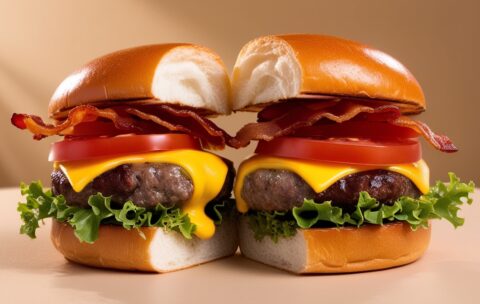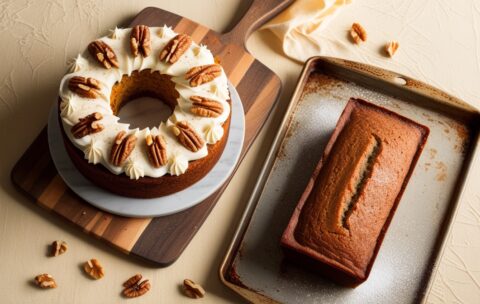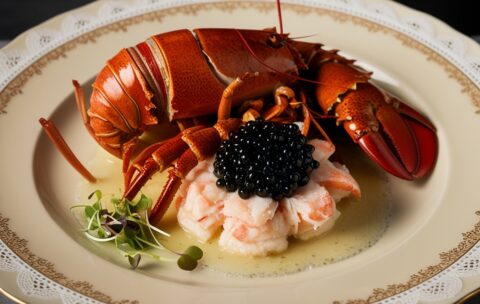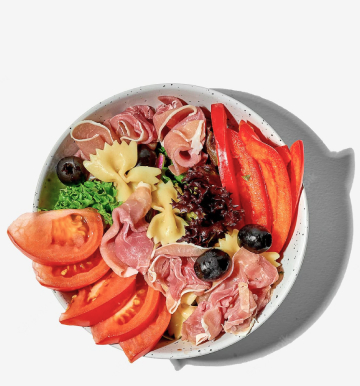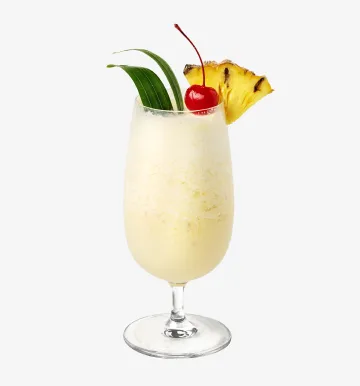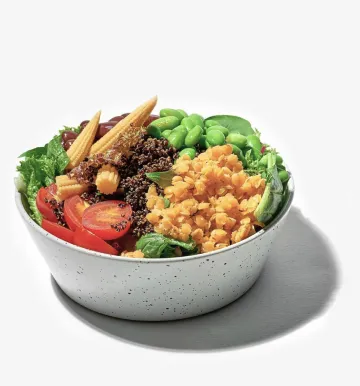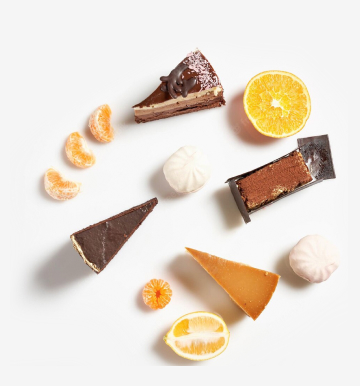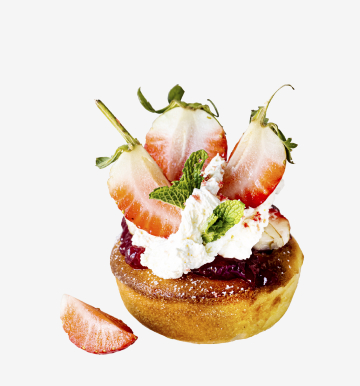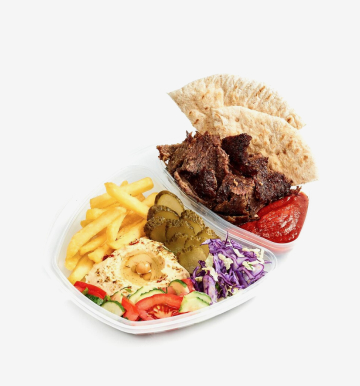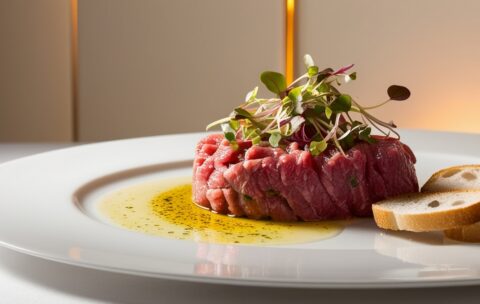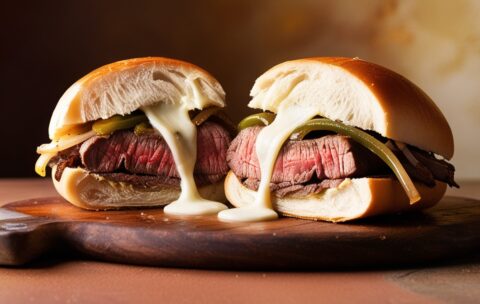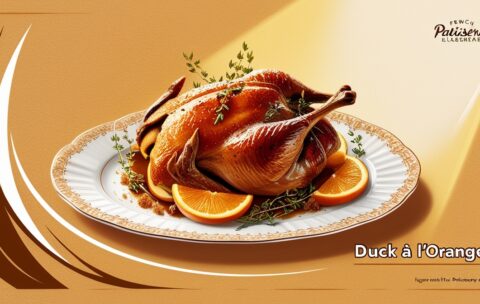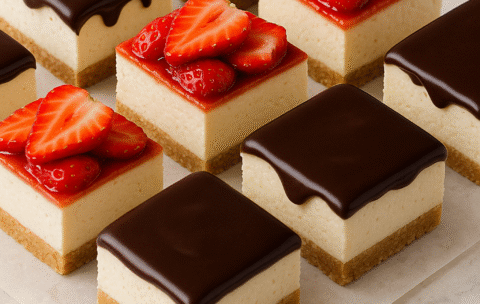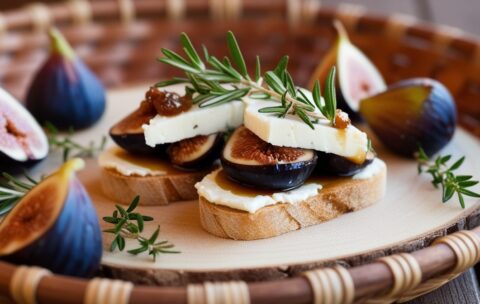Home Update 02
October 4, 2023 2025-06-05 13:04Home Update 02
Become a Home Chef
Learn to cook from scratch and master restaurant-quality meals in your own kitchen. Perfect for beginners and food lovers.

Our Top Courses
We've selected the best programs to get you started. Each course offers step-by-step lessons, hands-on recipes, and guaranteed results — even for beginners.
Classic Cheeseburger
4 Lessons
1.3 hour
Intermediate
What you'll learn
How to choose the right ground beef blend (fat-to-lean ratio) for juicy, tender patties
Seasoning techniques that enhance natural beef flavor without overpowering
Patty-shaping tips to avoid overworking meat and ensure even cooking
Proper grilling or pan-searing methods for desired doneness (from medium-rare to well-done)
Cheese selection and melting techniques for that signature gooey layer
Assembly order: layering bun, patty, cheese, toppings, and condiments for optimal taste and texture
Creative twists—beyond the classic: variations in cheeses, buns, and sauce recipes
Side suggestions and plating ideas to complement your cheeseburger
Carrot Cake & Spiced Loaf Cakes
2 Lessons
2.2 hours
Intermediate
What you'll learn
How to grate carrots (or prepare alternative base ingredients) to achieve ideal moisture and texture
Techniques for toasting nuts and folding mix-ins to prevent a heavy crumb
Spice blending ratios for cinnamon, nutmeg, ginger, and cloves to balance warmth and sweetness
Methods to cream butter and sugar just enough—no overmixing—so loaves rise evenly without tunnels
Frosting options: crafting classic cream cheese frosting, drizzling brown butter glaze, and applying a neat powdered sugar dusting
Variations on the base recipe (apple-spice, pumpkin-spice, coconut-carrot) to adapt to seasonal ingredients
Lobster Roll with Garlic Butter
4 Lessons
3.3 hours
Intermediate
What you'll learn
How to select, buy, and cook fresh lobster meat (from boiling/steaming to picking meat).
Techniques for making flavored garlic butter (infusing with garlic, herbs, lemon zest).
Proper seasoning and temperature control to keep lobster tender and juicy.
Best practices for toasting split-top hot dog buns or brioche rolls so they hold up and absorb butter.
How to assemble and garnish a Lobster Roll (balancing textures with finely chopped celery, chives, or parsley).
Crispy Lobster Thermidor with Sturgeon Caviar
3 Lessons
1.3 hour
Intermediate
What you'll learn
How to select and prepare fresh lobster tails for Thermidor
The classic steps to make a velouté-based Thermidor sauce (with cognac, Dijon mustard, and Gruyère)
Techniques for creating a crisp, golden gratin topping using breadcrumbs and cheese
Proper plating and finishing with sturgeon caviar for a refined presentation
Timing and temperature control to achieve perfectly cooked lobster without overcooking
Beef Stroganoff
3 Lessons
2.3 hours
Intermediate
What you'll learn
Ingredient Selection & Preparation:
How to choose ideal beef cuts (such as sirloin, tenderloin, or ribeye) and properly trim and slice them into even, bite-sized strips.
Techniques for cleaning, slicing, and preparing mushrooms, onions, and garlic to maximize flavor release.
Sautéing Fundamentals:
Maintaining optimal pan temperature for searing beef without overcooking.
Building a flavor base by sautéing onions and mushrooms to the right level of caramelization.
Sauce Development & Balancing:
Creating a roux or pan-deglazing method to thicken the sauce naturally.
Incorporating sour cream (or crème fraîche) at the correct temperature to prevent curdling.
Seasoning strategies—mustard, paprika, Worcestershire sauce—for depth and complexity.
Timing & Texture Control:
Managing cook times to ensure beef remains tender while mushrooms and onions soften.
Knowing when to add sour cream off-heat versus on low heat for optimal creaminess.
Adjusting consistency—when to thin with stock or thicken by reduction.
Presentation & Serving Suggestions:
Plating options: over buttered egg noodles, fluffy rice, or silky mashed potatoes.
Garnishing ideas—fresh parsley, chives, or dill—for color contrast and aroma.
Tips for reheating or making ahead without sacrificing texture.
Diamond Is Forever Martini
3 Lessons
59 minutes
Intermediate
What you'll learn
Ingredient Selection: How to choose the finest vodka or gin, the right sparkling wine, and food-grade iridescent dust (or edible glitter) for a dazzling effect.
Balance & Proportion: Techniques for blending spirit, vermouth (if using gin), and sparkling wine so that bubbles and glitter remain suspended.
Shake vs. Stir Techniques: When to shake for aeration and shimmer, and when to stir for a clearer, smoother presentation.
Sparkle Infusion: Methods for adding edible dust or glitter so that it floats and catches light without clumping or sinking.
Presentation & Garnish: Ways to rim the glass with sugar or fine glitter, and craft a minimalist twist or crystal garnish to enhance the “diamond” theme.
Pavlova
4 Lessons
3.3 hours
Intermediate
What you'll learn
Meringue Fundamentals (Paragraph + List):
You’ll understand how to whip egg whites to the correct stiffness and fold in sugar without deflating the mixture.
Recognize stages of beaten egg whites (soft peaks → stiff peaks).
Techniques for incorporating sugar gradually.
Identifying when the meringue mixture is ready for baking.
**Shaping & Baking Techniques (Table):
Step Key Tip
Piping vs. Spreading Use a piping bag for defined edges; spread with a spatula for a rustic look.
Forming a Well Create a shallow indentation in the center to hold cream and fruit.
Oven Temperature Start at 120 °C (250 °F) for 15 min, then reduce to 90 °C (200 °F) to dry.
This table highlights how small adjustments in technique and temperature impact the final texture.
Cream & Fruit Assembly (Paragraph):
Learn to prepare stabilized whipped cream so it holds shape, and choose complementary fruits (e.g., kiwi, berries, passion fruit) to balance sweetness and acidity.
Cosmopolitan
6 Lessons
5.2 hours
Intermediate
What you'll learn
How to select and measure high-quality vodka, cranberry juice, Triple Sec (or Cointreau), and fresh lime juice for optimal balance.
Proper shaking technique: ice selection, shaker fill level, and timing to achieve a silky-smooth texture and bright color.
Glassware choice and chilling methods (using a martini glass vs. a coupe).
Classic garnish options—lime wheel or twist—and how to express citrus oils for aroma.
Variations on the original recipe (e.g., swapping orange liqueurs or adjusting tartness).
Tips for batch-make a pitcher of Cosmopolitans without losing the vibrant hue and balanced taste.
Buttercream Icing Techniques
5 Lessons
59 minutes
Intermediate
What you'll learn
Buttercream Foundations: Basic ratios for American, Swiss, Italian, and French buttercreams; key differences in texture, sweetness, and stability.
Temperature Control: How to handle ingredients (room-temperature vs. chilled butter, sugar syrup stages) to prevent graininess or separation.
Flavoring & Infusing: Incorporating extracts, fruit purées, ganache, or cocoa; balancing sweetness and fat without compromising consistency.
Coloring Strategies: Best practices for gel vs. powdered colors; preventing “bleeding” or streaking when blending multiple hues (e.g., ombré or watercolor effects).
Spreading & Smoothing: Techniques for achieving glass-smooth sides (bench scraper, icing turntable, hot spatula method) and avoiding common marks or air pockets.
Piping & Decorative Textures: Creating rosettes, ruffles, ruffles, basketweave, petals, and multi-tone piping (hidden two-tone tips, reversible bags).
Stabilizing for Warm Climates: Adjusting recipes (adding meringue powder or corn syrup) so buttercream holds shape in humid or warm environments.
Troubleshooting Common Issues: Fixing grainy buttercream, curdled mixtures, overly soft or too-stiff icing; rescue methods (re-creaming, adjusting sugar syrup).
Loaded Nachos
5 Lessons
2.6 hours
Intermediate
What you'll learn
Chip Selection & Prep: How to choose sturdy yet crispy tortilla chips to prevent sogginess under heavy toppings.
Protein Options: Techniques for seasoning and cooking ground beef, shredded chicken, or black beans to use as a hearty nacho base.
Cheese Melting Methods: Tips for pairing cheeses (cheddar, Monterey Jack, Pepper Jack) and getting an even melt under the broiler or in the oven.
Layering Strategies: The optimal sequence for chips, beans, cheeses, proteins, and vegetables so each bite has balanced texture—no more soggy bottoms or cold patches.
Homemade Toppings: Quick recipes for pico de gallo, guacamole, and sour cream drizzle, plus how to pickle jalapeños or shred lettuce for freshness.
Garnishing & Presentation: Final touches—cilantro, green onions, lime wedges, and diced tomatoes—to turn a simple tray into an Instagram-worthy platter.
Serving & Reheating: Best practices for keeping loaded nachos warm, how to reheat leftovers without losing crispiness, and portion guidance for parties of various sizes.
Choose Your Category
Our courses are grouped by category to help you find what suits your taste. From quick dinners to gourmet desserts — start with what inspires you.



About Our Culinary Journey
We are passionate about bringing the joy of cooking to everyone. Our mission is to empower food lovers with the skills and confidence to create delicious meals at home. With expert chefs, innovative teaching methods, and a love for culinary arts, we’re here to inspire your kitchen adventures.
Our Commitment
Everyone can cook well. Our courses offer clear guidance to ensure success for all skill levels.
Community Focus
Join our foodie community. Share creations and grow in a supportive environment.
Why Choose Our Culinary Courses?
Our courses are designed to make cooking fun, accessible, and inspiring. Whether you're a beginner or a seasoned cook, our unique features will help you elevate your skills and unleash your culinary creativity.

Expert Instructors
Learn from world-class chefs with years of experience. Our instructors guide you step-by-step, sharing professional tips.

Flexible Learning
Study at your own pace, anytime, anywhere. Our online platform offers 24/7 access to lessons, so you can fit cooking into your busy schedule.

Hands-On Recipes
Practice with real recipes designed for all skill levels. From classic dishes to modern creations, you’ll master meals that impress every time.
What Our
Students Say
Hear from our happy students who have transformed their cooking skills with our courses. From beginners to seasoned cooks, our community loves sharing their success stories!
"This course completely changed how I cook! The instructors are so knowledgeable, and the lessons are easy to follow. I’m now confident making dishes I never thought I could."
Emma Johnson
"I love the flexibility of these courses. I can learn at my own pace and still feel supported. The recipes are amazing, and I’ve impressed my family with new dishes!"
Michael Chen
"The vegan cooking course was a game-changer for me. I learned so many creative ways to make plant-based meals that taste incredible. Highly recommend!"
Sophie Martinez
"The hands-on approach made learning so fun! I went from burning toast to baking artisan bread in weeks. Thank you for such an inspiring experience!"
James Carter
Discover Our Newest Culinary Courses
Get inspired by our latest additions! These exciting courses bring fresh ideas and techniques to your kitchen, perfect for food lovers eager to try something new. Browse our carousel to find your next culinary adventure.
Wagyu Beef Tartare with Truffle Oil
2 Lessons
58 minutes
Intermediate
What you'll learn
How to identify and source authentic Wagyu beef suitable for tartare
Proper techniques for trimming, dicing, and handling raw beef for safety and texture
Seasoning strategies that highlight Wagyu’s rich marbling without overpowering it
How to incorporate truffle oil (or alternative truffle components) for depth of flavor
Tips for balancing acidity, fat, and aromatics in a classic tartare base (mustard, capers, herbs, etc.)
Step-by-step instructions for elegant plating and finishing touches (microgreens, egg yolk, crispy brioche)
Food-safety best practices when serving raw beef to guests
Crispy Onion Rings
2 Lessons
3.8 hours
Intermediate
What you'll learn
How to choose the ideal onion variety (e.g., Vidalia, Walla Walla, or Spanish) for sweetness and structural integrity.
Techniques for slicing uniform rings to ensure even frying without undercooked centers or burnt edges.
Step-by-step instructions for creating a light, airy batter (including tempura-style options) that clings to the onion.
Methods for proper dredging, double-dipping, and maintaining batter consistency to achieve an ultra-crispy crust.
Temperature control in a frying setup—whether using a deep fryer, heavy pot, or cast-iron skillet—and how to monitor oil temperature accurately.
Tips for post-fry handling: draining rings on wire racks, timing seasoning applications, and preventing sogginess when serving.
Variations in seasoning blends (spicy paprika, garlic powder, or Parmesan) to customize flavor profiles.
Philly Cheesesteak
3 Lessons
3.8 hours
Intermediate
What you'll learn
How to choose and prepare the ideal cut of beef (ribeye or top round) for optimal flavor and tenderness.
Techniques for slicing steak paper-thin—even when working with untrimmed roasts—to ensure quick, even cooking.
Methods for properly caramelizing onions (and optional peppers) so they develop sweetness without burning.
The art of toasting a hoagie roll: achieving a lightly crisp exterior that still yields under melted cheese.
Cheese-melting strategies (provolone, American, or Cheez Whiz): achieving a gooey, coated consistency without overcooking.
Assembly order and timing: layering meat, onions, and cheese so each bite is balanced and warm.
Customization ideas: adding mushrooms, hot peppers, or garlic aioli to elevate traditional flavors.
Duck à l’Orange
2 Lessons
2.6 hours
Intermediate
What you'll learn
How to properly score and season duck breast (or prepare a whole duck) for even fat rendering and a crisp exterior.
Techniques for searing and roasting duck to medium-rare (internal temperature ~135 °F/57 °C) while maintaining juicy meat.
Fundamental steps for making an orange reduction: zesting, juicing, and balancing sweetness, acidity, and depth with stock and aromatics.
Methods for deglazing the pan and incorporating pan drippings into the sauce for added umami.
Strategies for finishing the sauce (mounting with butter, straining) so it coats the duck without becoming cloying.
Plating suggestions: slicing the breast, spooning sauce without drowning, and garnishing with orange segments or microgreens.
No-Bake Cheesecake Layered Cake Squares
5 Lessons
3.5 hours
Intermediate
What you'll learn
Preparing and pressing the ideal crust (graham, cookie, or nut-based)
Mixing smooth, lump-free cheesecake filling with flavor variations (vanilla, citrus, chocolate)
Layering multiple cheesecake batters for striped or marbled effects
Setting and chilling methods to ensure clean, precise slices
Decorating techniques: fruit compotes, ganache drips, whipped cream piping
Cutting and serving tips to maintain sharp edges and professional presentation
Troubleshooting & Refinement Workshop
4 Lessons
2.9 hours
Intermediate
What you'll learn
Identifying Baking Flaws
Recognize symptoms: wet centers, domed tops, tunneling.
Distinguish oven, ingredient, and mixing–related causes.
Adjusting Recipes & Techniques
Modify ratios for moisture balance and crumb structure.
Tweak mixing times to avoid over- or undermixing.
Oven Calibration & Bake Environment
Test for hot spots with simple cake tester method.
Optimize rack placement and temperature adjustments.
Emergency Fixes During Baking
Rescue sinking cakes mid-bake with tented foil or reduced heat.
Correct cracked tops by adjusting cooling and humidity.
Refinement Practices
Use test batches to fine-tune recipes.
Record observations and standardize best practices.
Cobb Salad
6 Lessons
2.9 hours
Intermediate
What you'll learn
How to poach or grill chicken breast for optimal juiciness
Technique for rendering and crisping bacon
Proper avocado selection and slicing without browning
Making a balanced Dijon-honey vinaigrette
Layering and plating the salad for visual appeal
Variations to adapt to dietary preferences (vegetarian, gluten-free)
Moscow Mule
5 Lessons
1.7 hour
Intermediate
What you'll learn
Historical Background: Discover how the Moscow Mule emerged in post–World War II America and its role in boosting vodka’s popularity.
Ingredient Selection: Learn why a quality vodka and spicy, carbonated ginger beer make a difference, and how fresh lime juice elevates the drink.
Proportions & Balance: Master the classic ratio of vodka to ginger beer to lime, ensuring the right interplay of heat, acidity, and spirit.
Mixing Technique: Practice stirring versus brief shaking to preserve carbonation, and understand why crushed ice versus cubes can alter texture.
Presentation & Serving: Explore the tradition of using a copper mug—how it impacts temperature, aroma, and visual appeal.
Garnishing & Variations: Experiment with garnish choices (lime wheel, mint sprig, candied ginger) and creative twists (fruit infusions, flavored vodkas).
Tasting & Pairing: Develop your palate to identify the balance between ginger spice and lime acidity, and which foods complement the Mule’s zing.
Goat Cheese and Fig Crostini
3 Lessons
1.2 hour
Intermediate
What you'll learn
How to properly slice and toast baguette rounds to achieve an even, crunchy base.
Techniques for preparing a simple fig compote, balancing sweetness and acidity.
Methods to blend goat cheese with complementary herbs or citrus zest for extra depth.
Tips for assembling crostini layers—goat cheese, fig compote, and finishing touches—for visual impact.
Flavor-pairing principles: matching creamy cheese with sweet fruit, crunchy bread, and a final drizzle.
Ritz Paris 24K Gold Margarita
7 Lessons
55 minutes
Intermediate
What you'll learn
Ingredient Selection & Sourcing: Identify and source the highest-quality tequila, triple sec, fresh citrus, and edible 24K gold.
Classic Margarita Technique: Master the foundational steps—shaking, straining, and rim-salting—to achieve a perfectly balanced margarita.
Gold Infusion Process: Safely incorporate 24-karat edible gold flakes and gold leaf for that unmistakable shimmer.
Presentation & Garnish: Plate and garnish your 24K Gold Margarita like a Ritz Paris bartender, including gold-rimmed glassware.
Advanced Tips: Explore optional flavor variations (e.g., citrus blends, infused agave) and learn how to adjust sweetness and acidity to taste.

